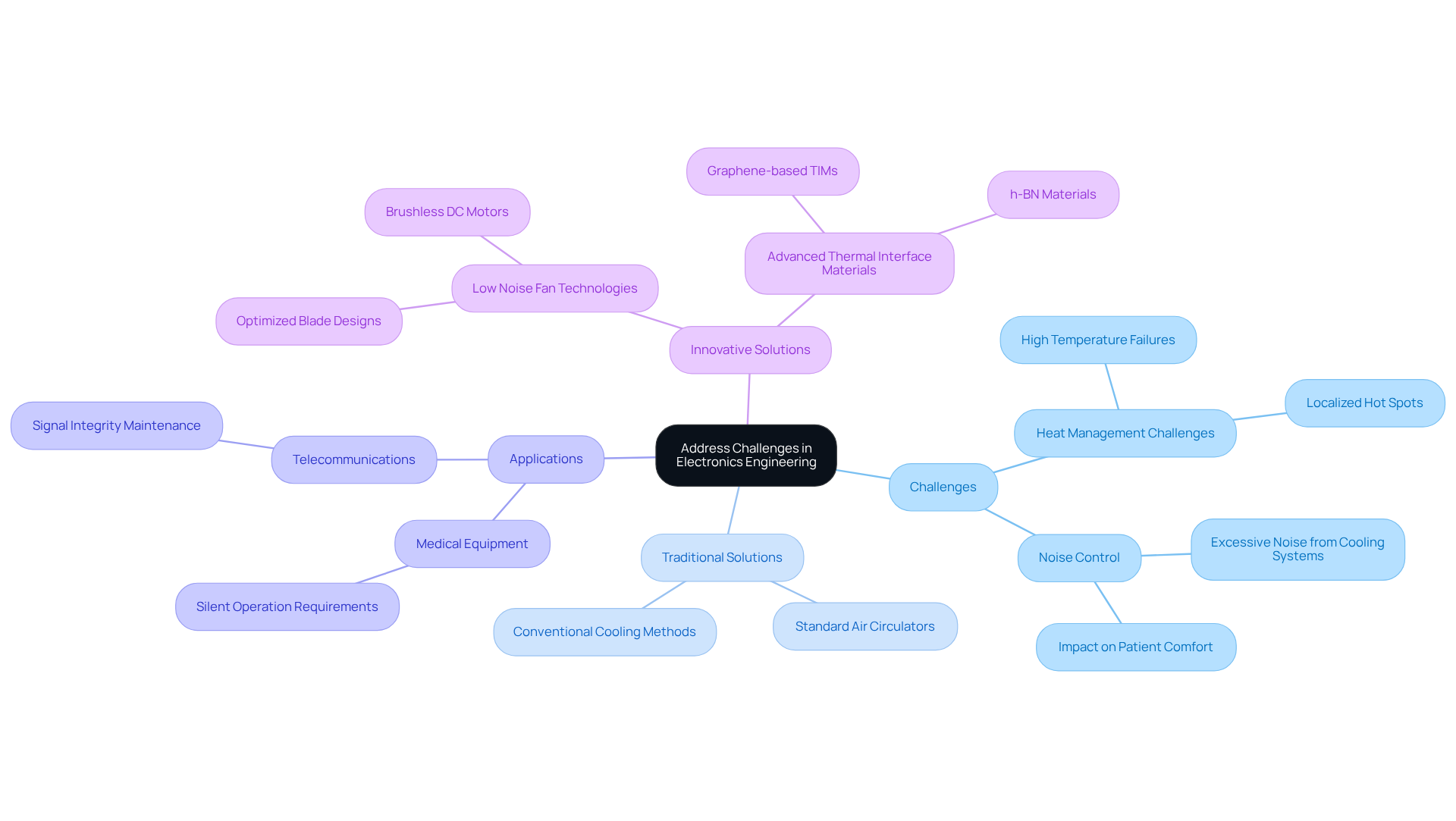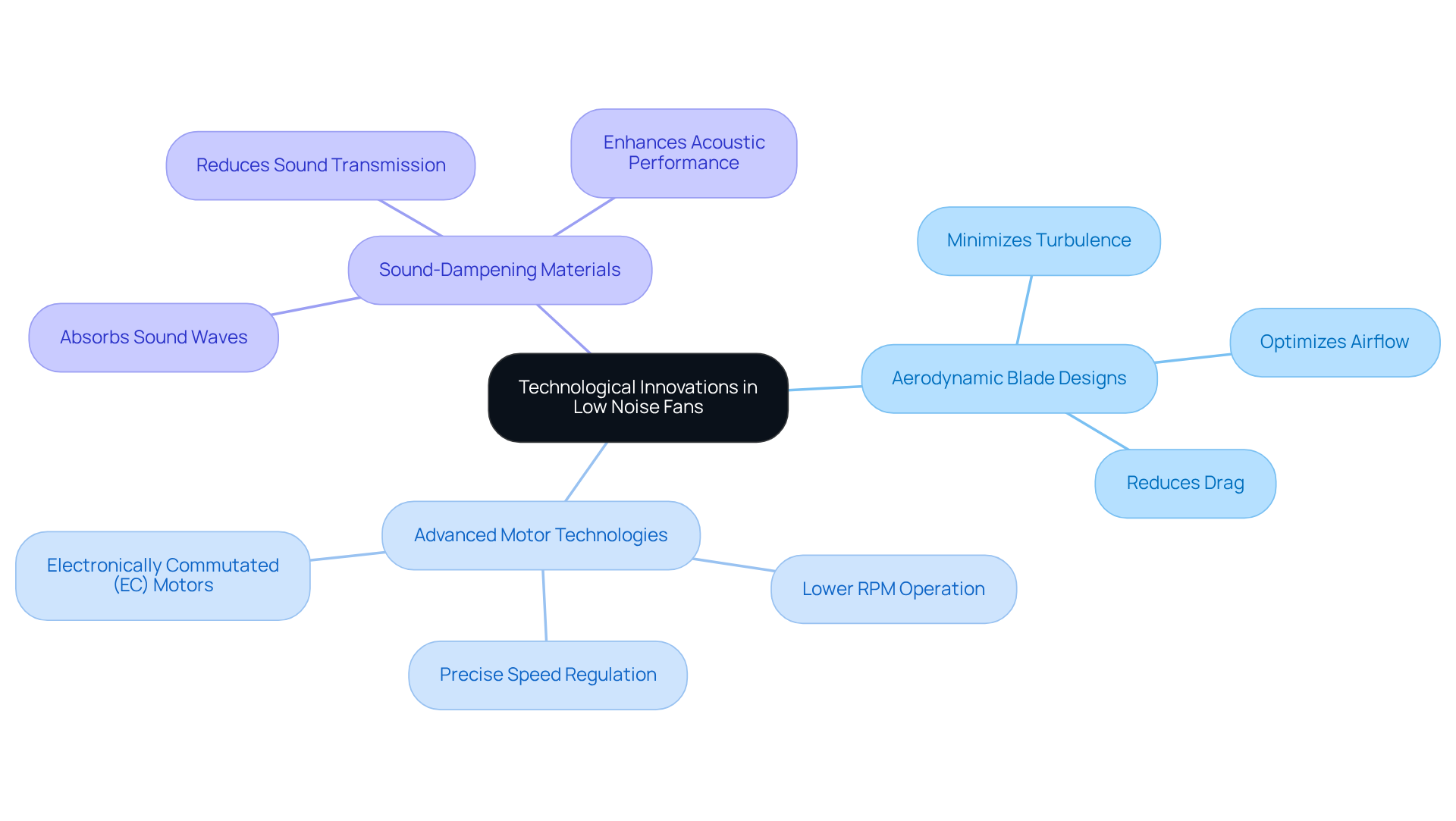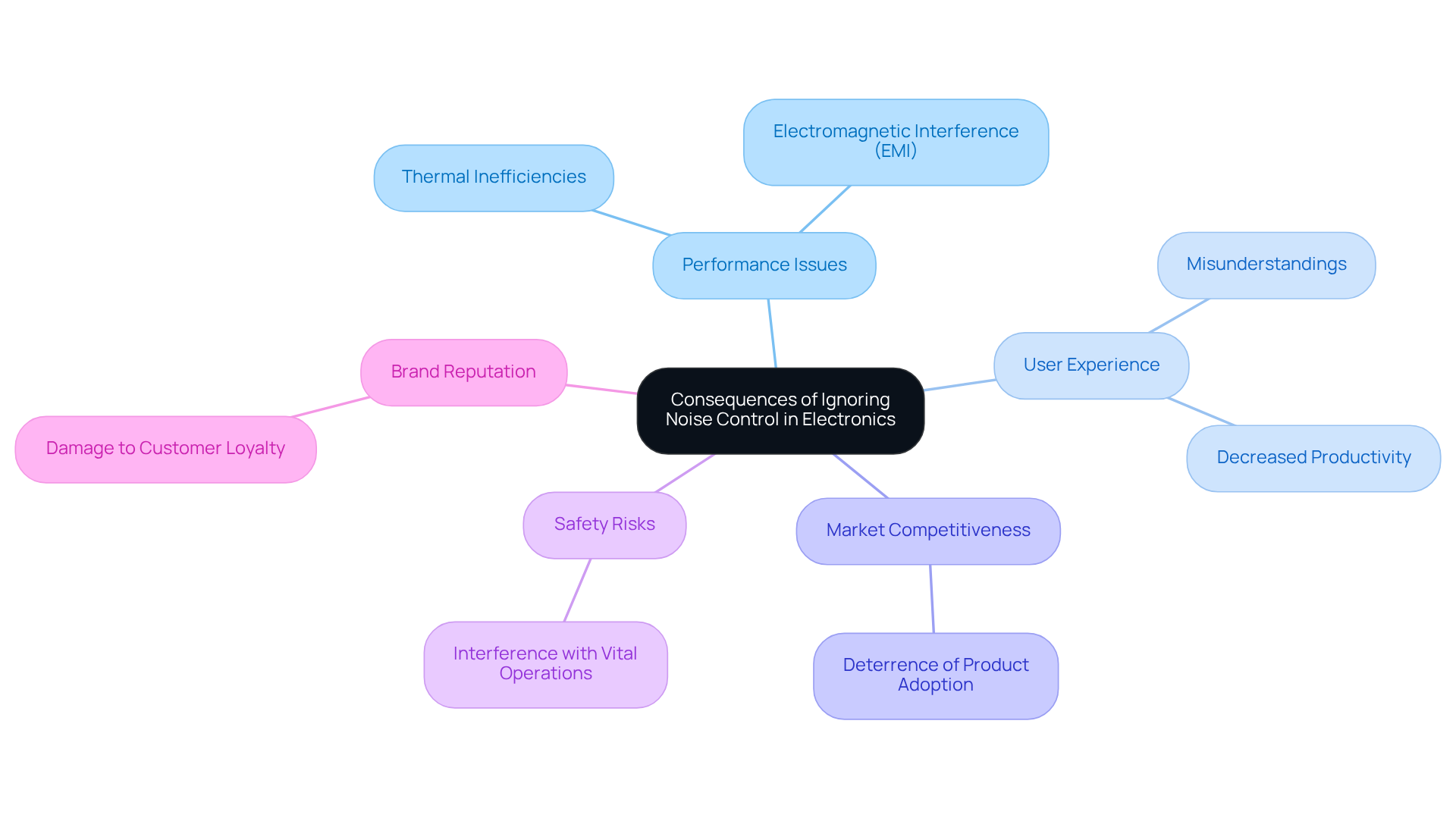Overview
Low noise fan solutions are critical for electronics engineers as they significantly enhance device performance by delivering efficient cooling while minimizing disruptive sound levels. This is particularly crucial in applications such as consumer electronics and medical equipment. The article underscores the importance of these fans, emphasizing their role in preventing overheating and improving user experience. Furthermore, it discusses technological advancements that facilitate quieter operation and greater efficiency, ultimately prompting engineers to consider these solutions in their designs.
Introduction
Low noise fans have emerged as a critical component in the electronics industry, where the balance between effective cooling and minimal sound disruption is paramount. These innovative solutions not only enhance user experience by maintaining a serene environment but also protect sensitive electronic components from overheating, thereby improving overall device performance.
However, as engineers strive to integrate these quiet cooling systems, they face the pressing challenge of ensuring efficiency without compromising sound levels. The implications of neglecting noise control in electronic designs can be significant, potentially leading to reduced device reliability and user satisfaction.
Engineers must leverage advancements in low noise fan technology to address these challenges effectively.
Understand the Importance of Low Noise Fans in Electronics
Low noise fans play a pivotal role in the electronics sector, especially in environments where sound levels significantly impact user experience and device functionality. These devices are designed with a low noise fan to operate quietly while providing , which is essential for preventing overheating in sensitive electronic components. Their significance is underscored by their ability to enhance device performance, maintaining optimal temperature ranges without disruptive noise.
For example, in consumer electronics such as computers and home entertainment systems, using a low noise fan improves user experience by minimizing distractions, with certain models achieving sound levels as low as 10-20 dBA. Typically, quiet cooling devices function at lower RPMs, which decreases airflow while substantially reducing noise levels.
In industrial settings, the reduction of sound pollution can lead to improved workplace conditions, thereby boosting productivity and employee satisfaction. Furthermore, advancements in fan technology, such as electronically commutated (EC) motors, facilitate variable speed control, further promoting quiet operation during periods of lower demand.
As Sam Pelonis aptly stated, “The bottom line is that the right fan for you will depend on your specific needs,” highlighting the necessity of selecting the appropriate fan for each application. It is also essential to acknowledge that over 600 individuals lose their lives annually due to extreme heat, emphasizing the critical importance of effective cooling solutions in preventing overheating.
Overall, the integration of low noise fans is a vital consideration for engineers focused on developing high-performance electronic systems that meet contemporary consumer expectations for quiet functionality. Moreover, advancements in materials and manufacturing techniques are anticipated to further enhance the efficiency of low-sound frameless ventilators.

Address Challenges in Electronics Engineering with Low Noise Solutions
Electronics engineers encounter significant challenges in developing systems that require efficient thermal management without compromising sound levels. High-performance components frequently produce considerable heat, necessitating effective cooling solutions. In fact, over 55% of electronic device failures are attributed to elevated temperatures at specific hot spots, underscoring the urgent need for effective thermal management strategies, including quiet ventilation systems.
Traditional cooling methods, such as standard air circulators, often generate , which can be detrimental in environments where sound levels must be controlled. Low noise fan solutions address these issues by utilizing advanced technologies, including brushless DC motors and optimized blade designs, to reduce operational noise while ensuring airflow efficiency.
For example, in medical equipment, where silent operation is critical for patient comfort, a low noise fan ensures that cooling occurs without disturbing the environment. Research indicates that excessive noise can negatively impact the performance of medical devices, making low sound solutions essential. Additionally, in telecommunications equipment, where disturbances can disrupt sensitive operations, a low noise fan helps maintain signal integrity by minimizing acoustic interference.
Moreover, the integration of advanced thermal interface materials (TIMs), such as those featuring innovative fillers like graphene and h-BN, can significantly enhance the overall thermal management approach. By adopting solutions such as a low noise fan, engineers can effectively address these challenges, leading to more reliable and user-friendly electronic systems.

Explore Technological Innovations Driving Low Noise Fan Development
The development of low noise fan technology has been significantly advanced by several key innovations that enhance both functionality and acoustic efficiency. A prominent advancement is the introduction of aerodynamic blade designs that effectively minimize turbulence—a primary source of noise in traditional devices. These blades are meticulously engineered to optimize airflow while reducing drag, which leads to quieter operation.
Furthermore, the incorporation of advanced motor technologies, such as electronically commutated (EC) motors, has transformed fan performance. These motors provide , allowing devices to operate at lower RPMs when maximum cooling is not required, thereby further decreasing sound levels.
In addition, the increasing use of sound-dampening materials in fan housings has proven effective in absorbing sound waves and reducing sound transmission. Such innovations not only improve the acoustic performance of low noise fans but also contribute to energy efficiency, positioning them as a sustainable choice for modern electronic applications.
As technology progresses, the potential for even quieter and more efficient cooling solutions remains highly promising.

Evaluate the Consequences of Ignoring Noise Control in Electronics
Neglecting sound management in electronic systems can lead to significant adverse effects on device performance and user experience. Excessive sound disrupts communication in environments where clarity is essential, such as conference rooms and medical facilities. This disruption can result in misunderstandings and decreased productivity.
In the consumer electronics sector, high sound levels may deter users from adopting certain products, thereby affecting market competitiveness. From a technical perspective, inadequate sound management can cause thermal inefficiencies; loud fans may not operate optimally, leading to overheating and potential component failure. Additionally, excessive sound can induce electromagnetic interference (EMI), which affects nearby equipment and complicates system reliability.
In critical applications like aerospace and automotive systems, such disturbances can interfere with vital operations, posing serious safety risks. The long-term consequences of neglecting sound control extend beyond immediate performance issues, potentially damaging brand reputation and customer loyalty.
Therefore, the integration of is not merely a design choice but a necessity for ensuring reliability, user satisfaction, and compliance with industry standards. The urgency of addressing noise control is underscored by the alarming statistic that approximately 23 million American workers are overexposed to noise daily, highlighting the pressing need for effective noise management strategies across diverse environments.

Conclusion
Low noise fan solutions are vital for electronics engineers, significantly enhancing device performance while ensuring a quiet user experience. By integrating these innovative cooling systems, engineers can effectively manage thermal challenges without compromising sound levels, ultimately leading to more reliable and user-friendly electronic devices.
The discussion underscores several key insights, including the essential role low noise fans play in both consumer electronics and industrial applications. Their capacity to maintain optimal temperature ranges while minimizing noise pollution is crucial for user satisfaction and productivity. Furthermore, advancements in fan technology—such as electronically commutated motors and optimized blade designs—have transformed noise control, rendering these solutions more efficient and sustainable.
Neglecting the significance of sound management in electronic systems can lead to serious consequences, adversely affecting device reliability and user experience. As the demand for quieter and more efficient cooling solutions continues to escalate, it is imperative for engineers to prioritize low noise fan technologies in their designs. By embracing these advancements, engineers not only enhance product performance but also contribute to a healthier and more productive environment, thereby reinforcing the necessity of incorporating low noise solutions into modern electronics engineering.
Frequently Asked Questions
What is the role of low noise fans in electronics?
Low noise fans are crucial in the electronics sector as they provide efficient cooling while operating quietly, preventing overheating in sensitive electronic components and enhancing user experience.
How do low noise fans improve user experience in consumer electronics?
They minimize distractions by operating at sound levels as low as 10-20 dBA, which is particularly beneficial in devices like computers and home entertainment systems.
What is the relationship between RPM and noise levels in quiet cooling devices?
Quiet cooling devices typically function at lower RPMs, which decreases airflow while significantly reducing noise levels.
How do low noise fans affect workplace conditions in industrial settings?
The reduction of sound pollution from low noise fans can lead to improved workplace conditions, boosting productivity and employee satisfaction.
What advancements in fan technology contribute to quieter operation?
Advancements such as electronically commutated (EC) motors allow for variable speed control, promoting quiet operation during periods of lower demand.
Why is it important to select the right fan for specific applications?
The right fan depends on specific needs, as highlighted by Sam Pelonis, ensuring optimal performance and functionality for each application.
What is the significance of effective cooling solutions in relation to health?
Effective cooling solutions are critical in preventing overheating, as over 600 individuals lose their lives annually due to extreme heat.
How are advancements in materials and manufacturing techniques expected to impact low noise fans?
These advancements are anticipated to further enhance the efficiency of low-sound frameless ventilators, improving their performance in electronic systems.

